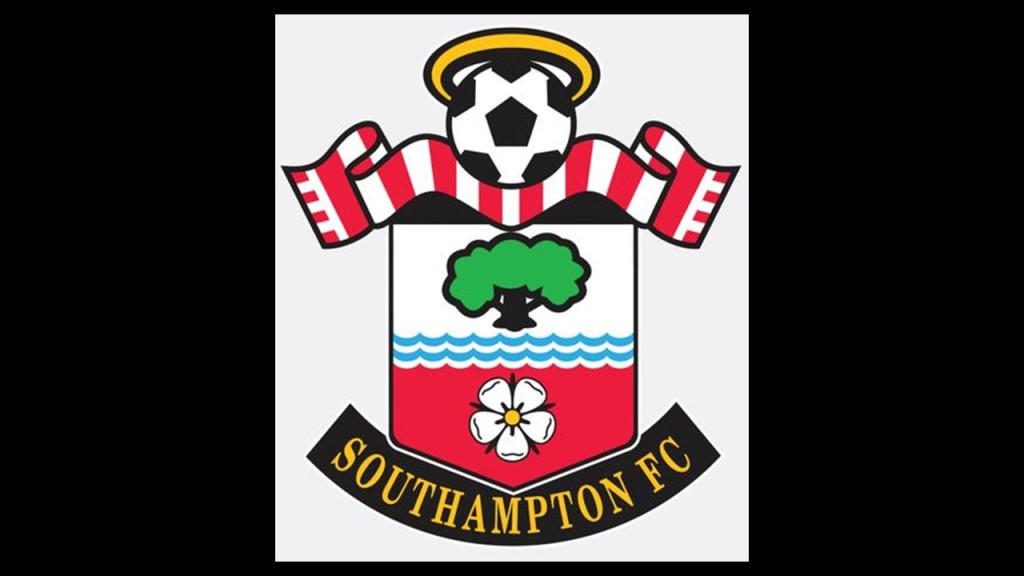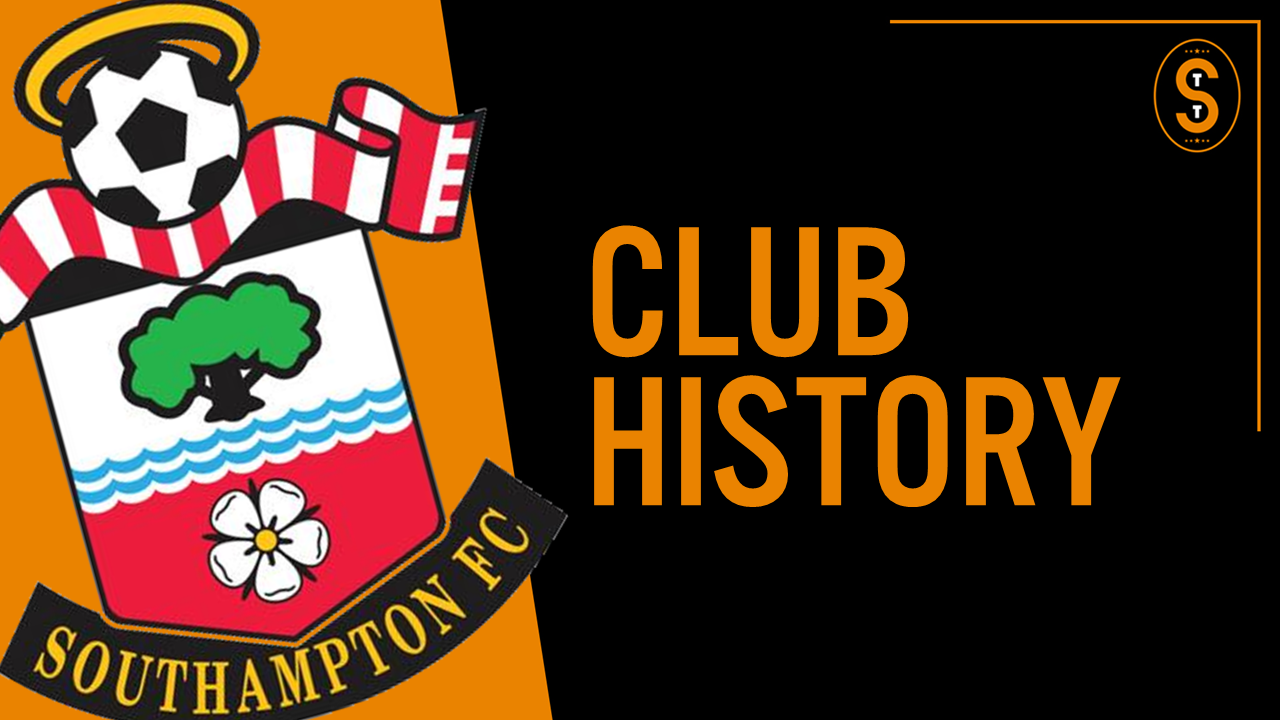Welcome to the Soccer Tavern, where we’re discussing the history, culture, and philosophy of the beautiful game. My name is Dave and in this video, we’re talking about the history of Southampton Football Club. Pull up a seat and let’s start the discussion.
Southampton FC is located in the eastern central part of the city of Southampton. Southampton is located along the south coast of England in the United Kingdom. The club currently play in the Premier League and its home ground is called St. Mary’s Stadium, which opened in 2001 and holds about 32,500 people.
Origin
The club’s founding story begins in 1885. In November 1885, the leaders of St. Mary’s Church in Southampton formed a Young Men’s Association for active recreation. They called the new organization Southampton St. Mary’s. The organization formed a soccer team and began play in late 1885. The club played for 12 seasons under that name before forming as an officially recognized limited company in 1897. Coinciding with the company formation, the club officially became Southampton Football Club in 1897.
Nickname
Southampton’s nickname is the Saints. As we just discussed, the church-based roots of the club’s formation are still a big part of the club’s identity, hence the nickname of the Saints. It’s one of the most straightforward nicknames in all of the Premier League.
Crest
The crest used today was actually designed by a fan in 1973 or 74 as part of a contest the club held. There have been slight tweaks to the crest over the past few decades but it’s been more or less the same since 1974.

The club’s name of Southampton FC is at the bottom of the crest.
The flower is a Hampshire rose in reference to the county where the city of Southampton is located.
The blue wavy lines represent the sea and local docks as Southampton has historically been and still is an incredibly important port city for England.
The tree is a reference to the nearby forest.
The scarf at the top of the crest represents the fans.
The soccer ball is a reference to the sport which the club plays and the Halo at the top of the crest is a nod back to Southampton’s founding by the church members of St. Mary’s.
Important Events
Let’s discuss 2 important events in the club’s history in this section.
In the 1965-1966 season, Southampton earned promotion to the first division for the first time in the club’s history. Draws against Leyton Orient and 2nd Division winners Manchester City in the last 2 matches of the season in May 1966 were enough for the squad to finish in 2nd place and secure promotion to the top flight. It was a joyous moment for the club and its fans.
The most memorable day in Southampton Football Club’s history came 10 years later on May 1, 1976. Southampton, then a Second Division side, won the FA Cup for the first time in their history. It was an incredible 1-0 victory over overwhelming favorites Manchester United. The Saints’ lone goal scored that day was by Bobby Stokes late in the match to secure a shock victory. The Queen of England physically awarded the trophy that day, which was the last time that the FA Cup was awarded by the Queen herself. The 1976 FA Cup remains Southampton’s only major trophy and is likely the greatest date in the club’s history.
Supporters
The song ‘The Bells of St. Mary’s’ was written specifically for Southampton FC supporters in 1950, but jazz became popular shortly after this song was written. For this reason, the club’s anthem sung by supporters became ‘Oh When the Saints Go Marching In’ and has been the anthem since the 1950s. Some Saints fans get annoyed that Tottenham supporters have taken their song, as Tottenham also sings a version of this. Due to Tottenham’s recent success and popularity, people are associating the anthem more with Tottenham even though Saints have more of a rightful claim to the anthem in their eyes.
Noteworthy Players
Let’s discuss 5 players in this section.
(1) Kevin Keegan – twice European player of the year, shockingly joined Southampton in 1980 ahead of Barcelona & Real Madrid. Although he was only with the club for 3 years, he managed to score 37 goals.
(2) Alan Shearer is regarded as the best striker in Premier League history. His record of 260 goals in the league still stands today. Although he is more well-known for his time at Blackburn and Newcastle United, he began his professional career at Southampton. He scored a hattrick at 17 years old for the Saints against Arsenal. He struggled for the next few seasons at the professional level before breaking out in the 1991-1992 season, at 21 years old to net 21 goals in all-competitions. That enticed Blackburn to pay an English record at the time transfer for him. He went on to have a legendary career.
(3) Matt Le Tissier likely had the greatest Southampton career of any player. He’s an absolute legend for the club, spending his entire 16 year playing career with the Saints. He scored 209 goals in 540 appearances for the club and earned the nickname of ‘Le God’ from supporters. He was known for scoring spectacular goals throughout his career and was a fantastic player for the club.
(4) Gareth Bale is one of the most famous modern Southampton players. He joined the Southampton satellite academy in Bath at 9 years old and signed for the first team in 2006 at 16 years old. Although he only played for the club for 2 seasons, his formative years were spent at Southampton and the club receives a ton of credit for developing him into the world class player he is currently. He was transferred to Tottenham in 2007, and then on to Real Madrid in a world record at the time transfer in 2013.
(5) So those four players were all great players in their own ways. This last player we need to talk about has one of the most interesting stories in Premier League history. A man named Ali Dia got a trial with Southampton in the mid-1990s. Someone posing as former world player of the year, George Weah, was recommending him to different clubs in England. Southampton gave him a 2 week trial based on this recommendation, which turned out to be bogus. After only 1 training session, the Saints were forced to put Ali Dia into a match due to an injury crises for the club. He did terribly in his one and only appearance and this infamous story is still one of the greatest mysteries in Premier League history.
Noteworthy Managers
Ted Bates is the club’s all-time winningest manager with 346 wins. He managed the club from 1955-1973 and was a former player, which earned him the nickname of “Mr. Southampton.” He led the Saints into the First division for the first time in the club’s history and there is a statue outside of Southampton’s home ground of Mr. Bates honoring his contributions to the club.
Lawrie McMenemy is the other manager I’d like to mention here. He was manager for the most successful period in Southampton’s history. McMenemy managed Southampton from 1973 to 1985. He led the club to their only major trophy, that FA Cup final in 1976 we discussed during the club’s important events. He also led the club to finishing 2nd place in the old first division, Southampton’s highest ever finish. McMenemy signed some of the most talented players in Europe during his tenure and built the Saints into a formidable club, making a handful of other cup finals during his time in charge.
Rivals
Southampton’s biggest rival is definitely Portsmouth FC. The cities of Southampton and Portsmouth are about 30 miles apart along England’s south coast. The clubs haven’t met too many times on the pitch relatively speaking in their 100+ year existence, which has actually helped really fuel this rivalry. It started to pick up in the 1950s & 60s when Portsmouth was falling down the divisions and Southampton was rising up the divisions. There was some resentment built up among fans at this time and hooliganism started to come into English soccer in the late 60s.
The resentment, coupled with the violence brought on by hooligans, took the rivalry into a fierce derby. Since the clubs haven’t met too often over the years, that pent up aggression and hatred from the rivalry really explodes whenever they do meet. So, even though Portsmouth is in the lower divisions, while Southampton is in the Premier League right now, this rivalry doesn’t look to be dissipating any time soon.
Far back of the rivalry with Portsmouth would be Southampton’s rivalry with AFC Bournemouth. As we mentioned in our AFC Bournemouth video, this isn’t much of a rivalry right now. But with both clubs having extended runs in the Premier League and both battling relegation this season, it has the potential to become a bigger rivalry. Both clubs are on the south coast of England. Both play in the Premier League now but their rivalry kind of began back in 2011 when both clubs were in League 1 (England’s 3rd division). It’s not a huge rivalry right now but is worth a mention.
Stats & Records
The stats and records we’re about to discuss are as of March 2018 when we are recording this video.
Southampton have spent 41 seasons in the top flight in their history.
The club’s only major trophy to date is the 1976 FA Cup.
The club’s record first team league appearance holder is Terry Paine with 713 appearances.
The club’s record league goal scorer is Mike Channon with 185 goals.
The Saints’ record transfer purchase was Guido Carrillo from AS Monaco on January 25, 2018 for about £19M.
And the club’s record transfer sale was Virgil van Dijk to Liverpool FC on January 1, 2018 for about £75M.
One last interesting fact about the club: On October 22, 1988, Southampton fielded Danny, Rodney and Raymond Wallace in their match against Sheffield Wednesday. This was significant because the Saints became the first club to include three brothers in the same First Division match in England.
So there you have it… a bit of history on Southampton Football Club. Let’s continue the discussion in the comments section below this video.
Thanks for stopping by the Soccer Tavern. Hope to see you again sometime soon. Cheers.
